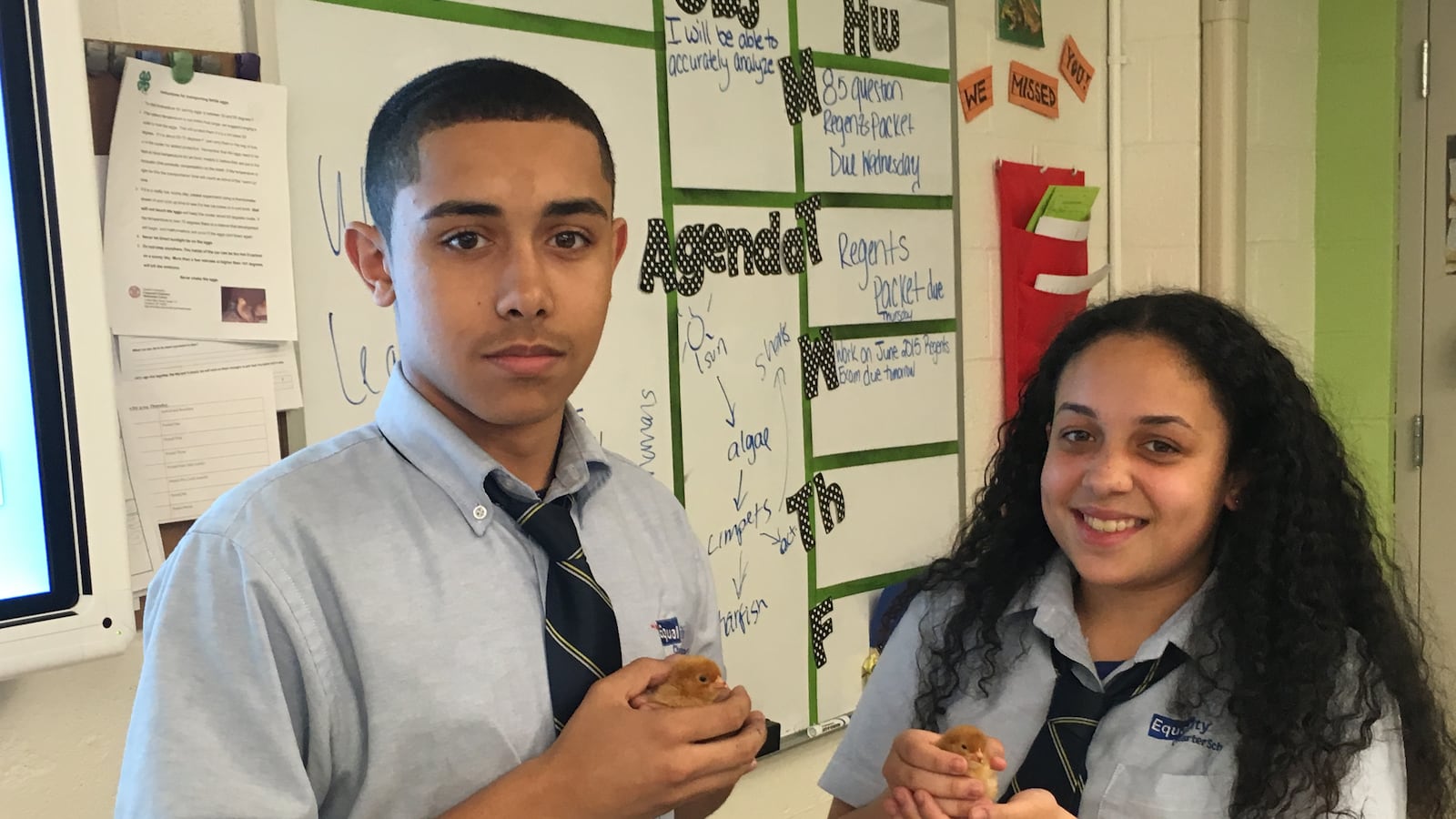In our second installment of “Close Up,” Chalkbeat explores the photo above in a conversation with Equality Charter High School’s science department head, Amrita Bhattacharyya. Remember to send your photos to ny.tips@chalkbeat.org if you’d like your school to be considered for the column.
Tell us about this photo.
These are ninth-graders at Equality Charter High School. Last spring, the class received 20 fertilized eggs, which they incubated for 21 days to study embryonic growth and development, while considering the care and attention required to develop new life. During this process, the students discussed sustainable farming, waste management from animal products, and the humane treatment of these animals, drawing on a recent visit to Stone Barns Center for Food and Agriculture.
Why use chicks to teach students about reproduction?
First, their gestation period is only 21 days. You can actually see through the shells by using a method called “candling” where students hold flashlights up to the egg and see movement and growth. This also helps the students visualize and have a tangible example of cell processes like mitosis. They don’t have to trust my word to see that development is happening — they can see it for themselves.
These are city kids. How did they respond to the chicks?
Like any kid would! Who doesn’t love a newborn … anything? Some of them were afraid to hold them, but every single student was engaged and curious about the process. They self-corrected, helped their peers, and practiced working collaboratively and compassionately with one another. It was especially lovely to see some of the students who may give you a hard time in the classroom soften up around the chicks. Or to see the student who doesn’t speak much during class ask a question about them. The whole experience was just awesome for both the students and myself.
What happened to the chicks at the end of the school year?
We don’t keep the chicks for the remainder of the year. By that time, they would be fully grown chickens as their cycle of development is much more rapid than ours. After 10 days, we took them up to a farm upstate. Many students asked to take them home and in the past they would do so over the weekend, but this year I kept them at the school as we had weekend classes and I was able to come in and care for them. The chicks got tons of visitors over the weekend, too.
How does this class help your students?
Aside from the academic benefit of seeing lessons come to life, this experience is something students remember. Every year, they ask if I am doing the project with my new students. They ask to come in and teach a portion, or make sure the “newbies” are taken care of. I think sometimes when we are teaching, especially a course where there is a Regents exam or some state exam attached to the class, we forget how much the opportunity to “care” can draw out the most beautiful sides of students.

